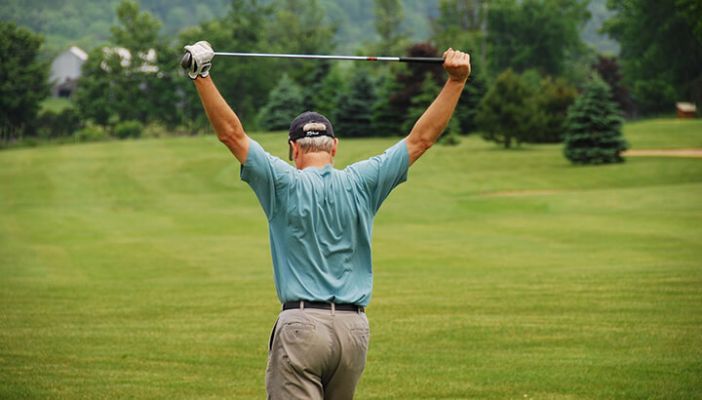Do you ever have muscle soreness after a day out on the course? Golf is an athletic venture, even if you do not need to be able to bench press your own body weight or run ten miles a day. Pro golfers are definitely athletes. They follow strict exercise, nutrition and recovery programs. And if you would like to see results like the pros, then you should too.
You may not have a professional trainer, a chef and an on-call masseuse, but there are several healthy things you can do to ensure that your level of physical fitness helps your golf game instead of hindering it. Proper muscle recovery can help make sure that you stay healthy and agile. It’ll help you avoid burnout and overuse injuries that are common with frequent golfers.
What is muscle recovery?
When we complete a workout or push our muscles to perform (as happens in a range session or four-hour golf game), we cause damage to the cells in our muscle fibers. This is the main cause of post-round muscle soreness. But don’t quit working out just yet — this is actually a good thing.
Micro-tears in our muscle fibers tell the body that it’s time to start the process of repair. Only our human bodies are over-achievers! If our bodies have the right conditions, they will go past the point of merely repairing the muscles to their former glory. Instead, they will improve upon past muscle tone and function. Pretty neat.
How to bolster muscle recovery
So, how do you create optimal conditions for your body to perform its best muscle recovery routine? After you hit the links, engage in as many of these behaviors as you can:
1. Rest and active recovery
Unless you’re in a tournament, avoid playing a hard game two days in a row. Give your body time to rest with adequate sleep and a day off in between hard muscle exertions. Active recovery includes gentle activity, like taking a walk. This boosts blood flow and helps your body heal.
2. Drink plenty of water
Of course, you should always stay hydrated. But this is especially true when your muscles are in need of repair. Damaged muscles retain water as part of the healing process. Make sure your body has enough.
3. Put ‘em on ice
If you’re experiencing acute patches of soreness, icing for 20 minutes at a time can reduce swelling and help the pain. Spending an hour alternating between 20 minutes of ice and 20 minutes of no ice has been proven to help pain and speed recovery.
4. Compression
If you’re really sore in one of your extremities, wrapping an ace bandage for light compression helps reduce swelling and pain.
5. Nutrition
Make sure you eat enough protein surrounding a workout — this is key to muscle repair. Some studies suggest that eating a 2:1 of carbs to protein on workout days will help with soreness.
6. Medicines
Analgesic creams like Bengay or IcyHot will treat pain, but won’t do much to actually heal your muscles faster. However, taking an over-the-counter anti-inflammatory (NSAID) like ibuprofen or naproxen will definitely help in acute muscle pain.
For a natural remedy without any harmful side effects, try mixing turmeric into your food. Countless studies have shown this ancient Indian spice to be a natural inflammation fighter on par with over-the-counter medications.
Make sure to enlist a professional
Muscle soreness after a day of golf may be a pain (literally), but it’s usually a sign of your body improving. So don’t be afraid rest, recover and get back out there on the course.
Seeking advice from a professional is always recommended before starting a new fitness program if you have concerns about the condition of your health. The advice here is compiled as a result of research. However, it does not take the place of medical advice.
— C. Pedroja
